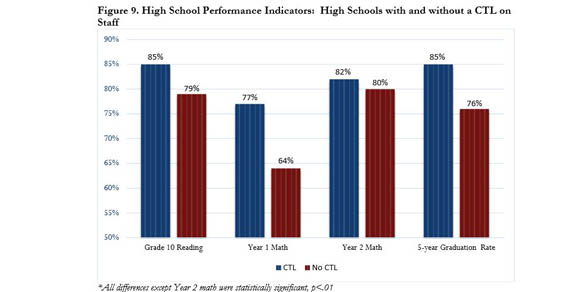
There’s yet more reason to invest in school library programs! Even as the number of endorsed librarians in today’s schools continues its downward trend, studies are consistently finding that there is no substitute for a quality school library program (You can peruse through research done by LRS and other institutions on this subject here). A new study conducted by the Washington Library Media Association (WLMA) and reported by School Library Journal further corroborates these findings. The study, which drew from 1,486 K-12 public schools across Washington state, concludes that students in schools that have a certified teacher-librarian (CTL) are more likely to perform better on standardized tests and to graduate, regardless of whether they live in an urban, suburban, or rural area, and regardless of the income of their household.
While 85% of students in schools with CTLs graduate in 5 years compared to 79% of students in schools without a CTL, the difference is far more profound in high-poverty schools. In areas where poverty is prevalent, nearly four-fifths (79%) of students in schools that have a CTL graduate in 5 years. This five year graduation rate, however, falls to well under half (43%) of students for schools that do not have a CTL.
While these findings are in line with many other recent studies, the WLMA took their research a step further by creating a method for evaluating the overall quality of library services. The Library Quality Scale (LQS) that they use assigns a score from 0-35 to each program based on the number of hours open, visits per week, the inventory of books and databases, and the number of computers available for instruction. Using this scale, the WLMA discovered that while nearly all of the schools (97%) report having some kind of library facility, minimal resources did not equate to higher performance. Programs that achieved a score over 26, however, had higher student achievement. This suggests that in order to see meaningful impact on student achievement, making an investment in library facilities and staff is critical.
Check out the full report from the WLMA here.
Note: This post is part of our series, “The Weekly Number.” In this series, we highlight statistics that help tell the story of the 21st-century library.